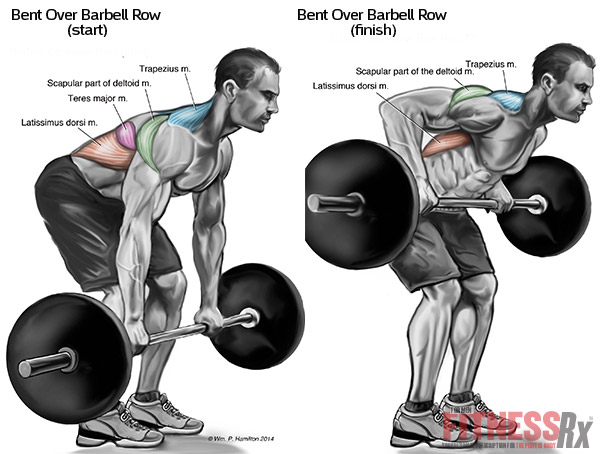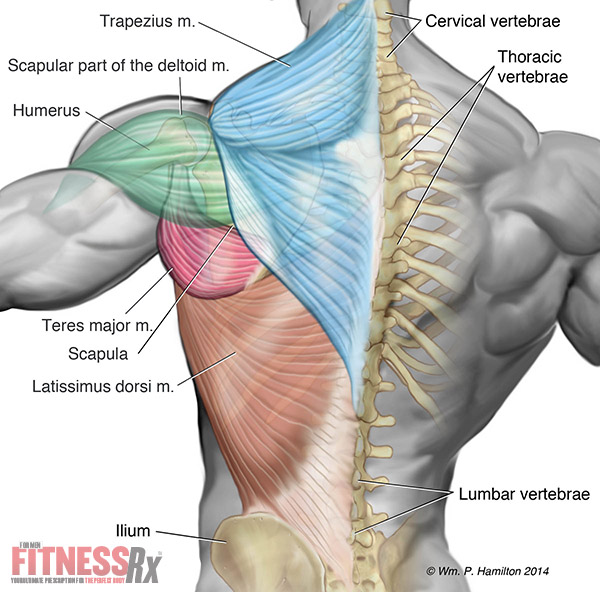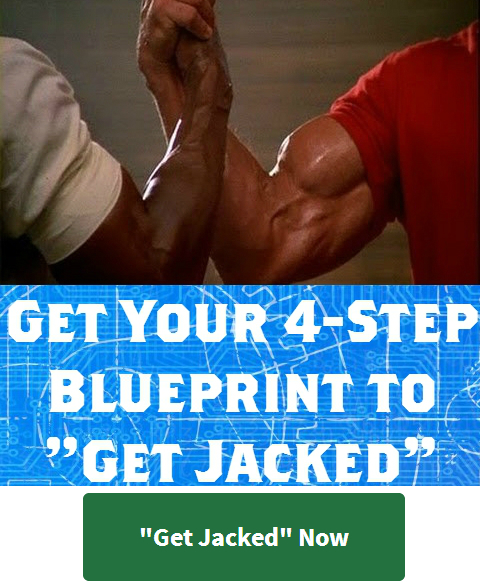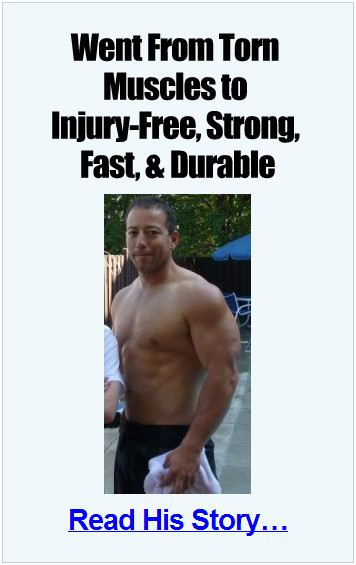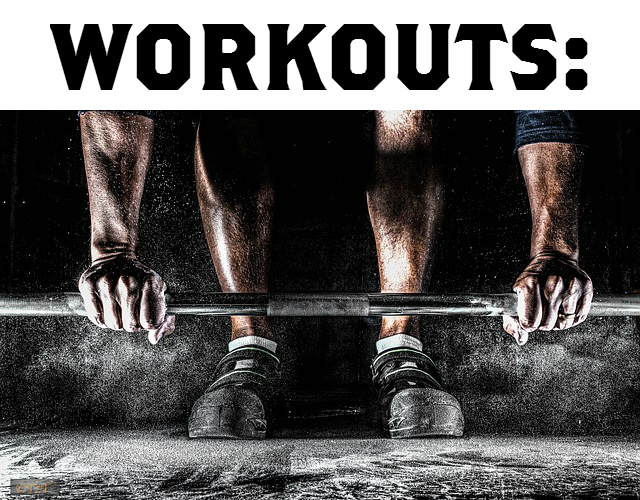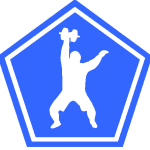 Get Your 4-Step Blueprint to "Get Jacked" Fast
Get Your 4-Step Blueprint to "Get Jacked" Fast

How to Get a Big & Thick
Upper Back
"Anybody can build a big chest. Big arms can be hidden by certain clothing styles. But a big, thick upper back is going to always exude a look of strength, power, & dominance. Learn this great exercise to look 'yoked'."
 Curated By: Matt "Wiggy" Wiggins
Curated By: Matt "Wiggy" Wiggins
“Resident BAMF” & “Lead Badass” at WCFnation.com
Creator: #GetJacked Project
I've been around the iron game for a long time...well over two decades.
I've known (& been surrounded by) top-notch powerlifters, athletes, bodybuilders, "meatheads", and more. Trust me when I've seen lots of big, strong, & jacked guys in my day.
So out of all the guys that I've known, seen, met, encountered, lifted with, & more, why is it that a random security guard at an airport in Dubai is the guy that sticks out in my mind when I think of a guy that's what you'd call "yoked"?
First of all, the guy was definitely jacked. He was muscular, lean, & obviously strong. He also didn't have that "pretty boy" look about him - he looked very athletic. Like he could handle himself.
But it was the guy's upper back that set him apart.
The guy just seemed to have muscle on top of muscle - his upper back, neck, traps...all of it.
It wasn't "too much", though. Think of a lean Olympic lifter or wrestler.
The guy's upper back was there like a beacon - not only showing you that he wasn't your average puny runt, but signifying just how much work he'd put in over the years. This was muscle you're not just born with.
I remember from an early age wanting this "jacked & yoked" look myself, and one of the first exercises I ever started using to build it was the Bent Barbell Row - still a favorite of mine. (And often a big part of this program.)
The below guide from FitnessRX For Men will teach you everything you need to know about the Bent Barbell Row so you can get started building your own awesome & muscular upper back.
"Thicken Your Upper and Middle Back With Bent Over Barbell Rows"
The back is comprised of a lot of muscles and to work them well requires an enormous amount of energy. However, your torso cannot have a strong frame without a strong back. A solid back can help stabilize your torso so that you can lift greater loads in other exercises (e.g., squats and presses).
There are not many exercises better than the barbell rows for developing middle and upper back thickness and strength. Rowing is an effective activator of all middle back muscles, especially the latissimus and teres major and trapezius muscles of the back.
Anatomy Lesson
The latissimus dorsi (lats) covers all of the middle and much of the lower parts of the back.1 The latissimus dorsi is attached inferiorly (at its bottom) to the thoracic vertebrae of the spine and the iliac crest of the hip bones and the lower three to four ribs. The fibers converge like a fan and attach on the upper (superior) portion of the humerus bone of the upper arm. It forms the majority of the width of the upper back inferior to the axilla (arm pit). The fibers of the latissimus dorsi have different angles of pull depending on where they attach. In general, the primary function of all of the fibers when they act together in barbell rowing is to extend the humerus (pull the upper arm backward).
The teres muscle attaches along the medial border of the scapula, and runs to the same region of the humerus bone as the latissimus dorsi. Barbell rows activate the arm extension function of the teres major, but it is important to pull the bar up as high as possible if you want to fully activate this muscle.
Although rowing activates hosts of other small back and shoulder muscles, the largest of the group is the trapezius muscle. This flat diamond-shaped muscle begins at the base of the skull and extends from the cervical (neck) vertebrae to the last (12th) thoracic vertebrae in the back. It attaches to the lateral part of the clavicle (collar bone) and along the medial border of the scapula. The middle part of the trapezius muscle is most active in barbell rowing because it pulls the scapula towards the vertebral column (by squeezing the scapula together) at the top part of the row.
The Exercise: Bent Over Barbell Row
- 1. Place a loaded barbell on the floor with your feet under the bar, about shoulder-width apart.
- 2. Bend over from the waist and flex your knees and hips to reach the bar. There should be a flat line from your shoulders to your hips.
- 3. Place your hands in a pronated position around the barbell (palms facing downward), with a grip that is only slightly wider than your shoulders.
- 4. Straighten your knees until your back is just about 10 degrees above parallel to the floor. Do not straighten your knees completely, as they should remain slightly flexed to absorb torque in the lower back that will be created by the exercise.
- 5. Pull your elbows away from the ribs so that there is a straight line running from one arm to the other. Pull the barbell up towards the mid part of your chest (in line with the edge of your lower pectoralis and not your abdomen). At the finish (highest point in the lift), there should be a straight line between both shoulders and the elbows.
- 6. From the top position, return the barbell slowly towards the floor (3-4 seconds) but do not let the bar hit it. Attempt to obtain a stretch in the upper back with the bar in the lowest position. Do not move the lower back (i.e., this is not a deadlift) but make sure the stretch is in the middle and upper back. Pull the weight back to the chest for the next repetition.
Rx Tip
It is very important to prevent the lower back from moving as the weight is being lifted or lowered, as excessive movement in the spine will reduce latissimus work and risk lower back injury. Starting with your torso at about 30 degrees above a position that is parallel to the floor will increase the activation of the teres major and middle-upper trapezius while reducing the activation of the lowest fibers of the latissimus. A closer hand position (more narrow than shoulder width) will increase the range of motion for the latissimus muscles but it may also increase arm (biceps) fatigue, which will limit the work on the back.
(Content, images, modified featured image & reference found / originally published at FitnessRx for Men)

